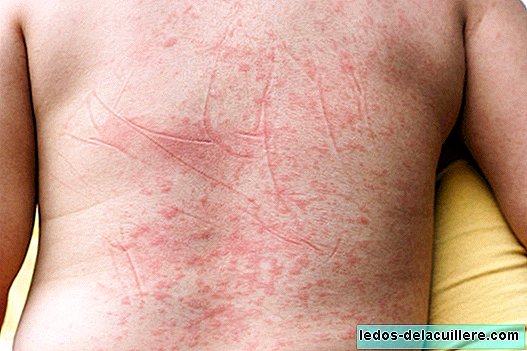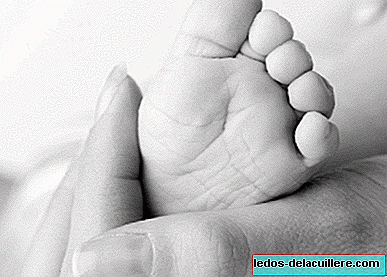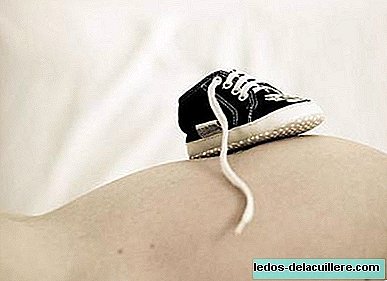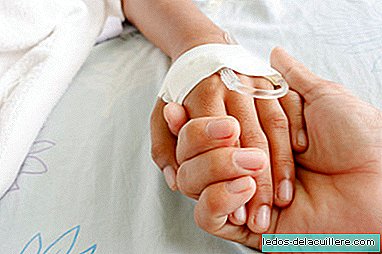Scarlet fever or scarlet fever is a childhood infection that was thought to have been almost relegated to other times, but that continues to affect children, still being frequent. It is essential to know their symptoms, since early diagnosis and proper treatment are key to avoid complications. Thus, we tell you all about scarlet fever in children.
Scarlet fever is a bacterial infection caused by group A streptococci, which spreads with the close contact of people who have the bacteria (often in the throat) or by contact with objects and surfaces that are contaminated with the pathogen.
The disease is caused by acute pharyngotonsillitis (angina) associated with a rash, which is the characteristic rash rash, hence its name. Some families of the bacteria called group A beta hemolytic streptococcus (Streptococcus pyogenes) produce a substance (toxin) that causes the rash.
As we have pointed out, in recent years a certain rebound in its incidence has been observed, but it is a benign and self-limited disease. It occurs more frequently in children between 2 and 8 years of age (with the highest incidence at 4 years), and is of seasonal predominance, more frequent at the end of winter and spring. It is not usual for younger children to have scarlet fever: babies still have antibodies transmitted by the mother through the placenta during pregnancy.
The disease was never eradicated, there have always been cases, but what has changed today is its treatment and its severity, since today it is not a potentially serious disease as it was years ago, before the appearance of antibiotics .
How is scarlet fever spread?
The first thing we need to know (for possible prevention, especially if there is a sick person in the family), is the way in which scarlet fever is contracted. Contagion occurs through droplets of respiratory secretions from the sick person or from a healthy carrier (who has streptococcus but no symptoms). In other words, the transmission is direct person to person by air, so if the child (or another person in the family) has a strep throat, he can spread it to those nearby.
It can also be transmitted by newly contaminated passive fomites or vectors, that is, any lifeless object that if contaminated with a viable pathogen is capable of transferring it (skin cells, hair, clothing, sheets ...).
Only in rare cases scarlet fever can occur as a result of infection of a wound by this microbe, without accompanying pharyngotonsillitis.
If a spread of scarlet fever has already been suffered, others may occur throughout life, since there are at least three different types of rash-producing toxin.Therefore, the same person can suffer several episodes of the disease, because he is infected by toxins against which he has not developed antibodies: the defenses do not recognize them and he becomes ill again. This does not happen with the type of scarlet fever that has already been passed.
There is no vaccine to prevent scarlet fever.

Symptoms of scarlet fever in children
We must be attentive to the symptoms of scarlet fever to avoid complications. Scarlet fever manifests clinically in two phases:
Initial phase or prodromes: it starts as a typical tonsillitis, inflammation of the tonsils and neck nodes, with very high fever of sudden onset (up to 40 °), sore throat, headache and vomiting occasionally. Abdominal pain and a feeling of generalized tiredness may also appear. The fever usually lasts three to five days.
Rash phase or rash: the rash that appears on the skin at 12-48 hours after the fever is the most characteristic of scarlet fever. It is a reddish rash, scarlet color, which begins at the base of the neck and face to subsequently extend to the trunk and limbs, descending to the rest of the body. It can produce itching. At the beginning the rash reminds of a sunburn, with red and lighted skin, which lightens with pressure. The skin is rough to the touch, with small scratchy pimples. In addition, the scarlet rash has affects the folds (for example in the bend of the elbow, behind the knees, or in the armpits), leading to red lines. It is also very typical that this rash does not affect the area around the mouth. This rash begins to disappear after 4 to 6 days, and it is very common for the skin to peel, a peeling that can last up to 6 or 8 weeks.
There are other specific physical signs that help specialists diagnose the disease. In any case, if we observe any of the symptoms in our child, we must go to the doctor. The ABE Guide to Pediatric Infections lists the following in total physical findings for scarlet fever:
Pharyngitis. The pharynx is observed with hyperemic tonsils with confluent whitish exudate; petechiae in uvula and palatine veil; painful laterocervical adenopathies.
Exanthema. Appearance at 12-48 hours after starting the painting. It is a diffuse, micropapulous, erythematous rash (intense red coloration that disappears with pressure), rough to the touch, like "goosebumps." The rash is more intense in areas of folds; Hyperémic transverse lines in the antecubital area and flexures that do not bleach with pressure (Pastia sign). Diffuse redness of the cheeks occurs that respects the nasolabial triangle, circumoral paleness ("Filatov triangle").
Others. Tongue branched out due to thickening of the papillae and swelling; initially saburral and then red and congestive.
Peeling (currently less frequent). The degree of desquamation is proportional to the intensity of the eruption. It is foliar type; initially in face and caudal progression; more intense in armpits, english and fingers.

Treatment of scarlet fever in children
You should see a doctor if the child complains of a sore throat accompanied by a sudden rise in temperature and / or rash appears. The diagnosis of scarlet fever in the child must be made by the pediatrician through a clinical interview and physical examination.
The clinical signs are very simple and therefore the diagnosis, although in some cases the doctor may request a rapid analysis of streptococcus A. This test is performed using a swab, it is a simple analysis that can be detected quickly, in just a few minutes , the presence of the germ. It is available in the emergency services and in many health centers.
In clinical practice there are two situations that raise doubts: one, the scarlet fever rash without fever and / or pharyngitis; and, two, recurrences, that is, successive similar diseases. Other microorganisms may be involved in these situations, so it is recommended that a culture of the pharyngeal exudate be carried out (the results of the culture may take more, about 48 hours).
If scarlet fever is confirmed, the indicated treatment will be the administration of antibiotics (usually penicillin or amoxicillin). If the child takes the antibiotic orally, it is essential to make good use of it, that is, to complete the complete treatment since an incomplete treatment sometimes results in the recurrence of the disease. Follow the pediatrician's instructions on the correct mode of administration.
Most children with streptococcal infections respond quickly to antibiotic treatment. Usually, fever, sore throat and headache disappear within 24 hours. The rash can still last for three to five days.
If the child's condition does not show improvement with treatment, the pediatrician must be notified. Also if other family members develop a fever or pain, with or without a rash.Caring for the sick child (and others do not get sick)
If a child has scarlet fever, he will have to stay home while the fever lasts. To relieve the child during illness (After going to the doctor and starting treatment), it is advisable to regularly monitor its temperature and have it drink water frequently to avoid dehydration. Giving soft foods like soups, yogurts, creams ... will make it less painful to swallow.
There is no vaccine to prevent scarlet fever, but we can try to minimize the spread. To avoid spreading it to other family members, frequent hand washing, covering your mouth and nose when coughing and sneezing, using tissues, cleaning objects in contact with the child, airing the room once a day ...
While symptoms are present, it is recommended that the child rest as much as possible and therefore, also to prevent the spread of other children, remain at home for at least two days. In this period it is advisable to avoid contact with other people so as not to favor a possible infection.
When the fever disappears between 24-48 hours after the start of the antibiotic treatment you will be well and you can already live a normal life, go to school ...
Complications of scarlet fever in children
As we have just seen, scarlet fever is easily resolved by antibiotics. But if the disease is not treated, it can lead to complications such as the following:
Rheumatic fever, popularly known as "blood velocity", which can cause arthritis, skin nodules, permanently damage the heart ... Nowadays it is very rare.
Posttestreptococcal glomerulonephritis: is an inflammation of the kidney that results in the appearance of blood in the urine, high blood pressure, and loss of protein in the urine, which can cause edema. It is also very rare.
A bad treatment of scarlet fever can also lead to infection of the ear and sinuses, swollen glands in the neck and pus around the tonsils, pneumonia.
Luckily, these complications can be avoided by going to the pediatrician on time and following the right treatment to cure scarlet fever in children.
Photos | iStock
In Babies and more | The most frequent diseases in childhood, can it be prevented? Hygiene against infections in children, Nine strategies to prevent children from getting sick












